
A scow is a type of flat-bottomed barge. Some scows are rigged as sailing scows. In the 19th and early 20th centuries, scows carried cargo in coastal waters and inland waterways, having an advantage for navigating shallow water or small harbours. Scows were in common use in the American Great Lakes and other parts of the U.S., in southern England, and in New Zealand. In Canada, scows have traditionally been used to transport cattle to the islands of New Brunswick's Saint John River. In modern times their main purpose is for recreation and racing.
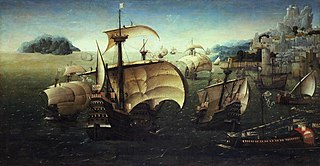
A carrack is a three- or four-masted ocean-going sailing ship that was developed in the 14th to 15th centuries in Europe, most notably in Portugal. Evolved from the single-masted cog, the carrack was first used for European trade from the Mediterranean to the Baltic and quickly found use with the newly found wealth of the trade between Europe and Africa and then the trans-Atlantic trade with the Americas. In their most advanced forms, they were used by the Portuguese for trade between Europe and Asia starting in the late 15th century, before eventually being superseded in the 17th century by the galleon, introduced in the 16th century.
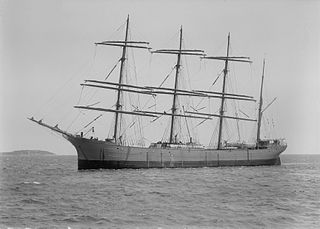
Lawhill was a steel-hulled four-masted barque rigged in "jubilee" or "baldheaded" fashion, i.e. without royal sails over the top-gallant sails, active in the early part of the 20th century. Although her career was not especially remarkable, save perhaps for being consistently profitable as a cargo carrier, in the 1930s Richard Cookson went on board and extensively documented Lawhill's internals and construction, which was later published in the Anatomy of the Ship series.
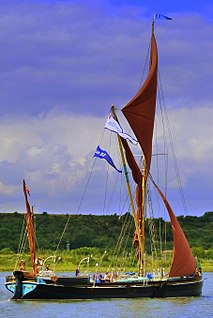
A Thames sailing barge is a type of commercial sailing boat once common on the River Thames in London. The flat-bottomed barges with a shallow draught and leeboards, were perfectly adapted to the Thames Estuary, with its shallow waters and narrow tributary rivers. The larger barges were seaworthy vessels, and were the largest sailing vessel to be handled by just two men. The average size was about 120 tons and they carried 4,200 square feet (390 m2) of canvas sail in six working sails. The mainsail was loose-footed and set up with a sprit, and was brailed to the mast when not needed. It is sheeted to a horse, as is the foresail; they require no attention when tacking. The foresail is often held back by the mate to help the vessel come about more swiftly.

Iron-hulled sailing ships represented the final evolution of sailing ships at the end of the age of sail. They were built to carry bulk cargo for long distances in the nineteenth and early twentieth centuries. They were the largest of merchant sailing ships, with three to five masts and square sails, as well as other sail plans. They carried lumber, guano, grain or ore between continents. Later examples had steel hulls. They are sometimes referred to as "windjammers" or "tall ships". Several survive, variously operating as school ships, museum ships, restaurant ships, and cruise ships.

Indien (1778), often L'Indien, was a frigate built for the U.S. Commissioners in France – Benjamin Franklin, Silas Deane, and Arthur Lee – to a design by the French naval architect Jacques Boux. She was laid down early in 1777 by a private shipyard in Amsterdam and launched in February 1778. Apparently she was built with the scantlings and lines of a small 74-gun Third Rate ship of the line but was a frigate in construction. In 1780 the Duke of Luxembourg chartered her to the navy of South Carolina and she sailed as South Carolina.

Moshulu is a four-masted steel barque, built as Kurt by William Hamilton and Company at Port Glasgow in Scotland in 1904. The largest remaining original windjammer, she is currently a floating restaurant docked in Penn's Landing, Philadelphia, adjacent to the museum ships USS Olympia and USS Becuna.

A jackass-barque, sometimes spelled jackass bark, is a sailing ship with three masts, of which the foremast is square-rigged and the main is partially square-rigged and partially fore-and-aft rigged (course). The mizzen mast is fore-and-aft rigged.

Slave ships were large cargo ships specially built or converted from the 17th to the 19th century for transporting slaves. Such ships were also known as "Guineamen" because the trade involved human trafficking to and from the Guinea coast in West Africa.

HMS Belvidera was a 36-gun Royal Navy Apollo-class fifth-rate frigate built in Deptford in 1809. She saw action in the Napoleonic Wars and the War of 1812 and continued a busy career at sea into the middle of the 19th century. In 1846 she was reduced to harbour service, in 1860 she became a receiving ship, and she was finally disposed of in 1906.

In the middle third of the 19th century, the clippers which carried cargoes of tea from China to Britain would compete in informal races to be first ship to dock in London with the new crop of each season. The Great Tea Race of 1866 was keenly followed in the press, with an extremely close finish. Taeping docked 28 minutes before Ariel - after a passage of more than 14,000 miles. Ariel had been ahead when the ships were taken in tow by steam tugs off Deal, but after waiting for the tide at Gravesend the deciding factor was the height of tide at which one could enter the different docks used by each ship. The third finisher, Serica, docked an hour and 15 minutes after Ariel. These three ships had left China on the same tide and arrived at London 99 days later to dock on the same tide. The next to arrive, 28 hours later, was Fiery Cross, followed, the next day, by Taitsing.

Albatros is a sailing ketch built in the Netherlands in 1899. Trading as a cargo sailing ship until 1996, she is now used as a training vessel.

Thalatta is a Thames sailing barge, built in Harwich, Essex, in 1906 and rebuilt in St Osyth in 2012. She is 90 feet (27 m) long and 26 feet (7.9 m) across the widest part of the deck. Like all Thames barges, she is flat-bottomed and has leeboards instead of a keel. She spent some of her life ketch-rigged and some of it spritsail-rigged. She is now permanently spritsail rigged, and has a mainmast and topmast that, together, are about 90 feet (27 m) high, and a mizzen mast. Thalatta has had two periods with an auxiliary engine and two without. She carried cargo for sixty years and was then converted for use as a sail training ship in 1966. She was completely rebuilt between 2006 and 2012 at St Osyth with assistance from lottery funds.

HMS Lark was a 16-gun ship sloop of the Cormorant class, launched in 1794 at Northfleet. She served primarily in the Caribbean, where she took a number of prizes, some after quite intensive action. Lark foundered off San Domingo in August 1809, with the loss of her captain and almost all her crew.
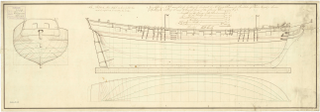
HMS Diligence was the name ship of her class of brig-sloops of the Royal Navy. She was launched in 1795 and lost in 1800. She spent her brief career on the Jamaica station where she captured four armed vessels, one of them after a short engagement, and many small Spanish and French merchant vessels in the Caribbean inter-island and coastal trade.

Bushman's River Mouth is a town in Ndlambe Local Municipality in the Eastern Cape province of South Africa.

SB Centaur is a wooden Thames sailing barge, built in Harwich, Essex, England in 1895. She was used to carry various cargoes, mainly grain, for the next 60 years. During the First World War she carried food and coal to the French Channel ports. During the Second World War Centaur was damaged when sailing to assist with the Dunkirk Evacuation. She did war work for the duration of the conflict.

SB Pudge is a wooden Thames sailing barge, built in Rochester, Kent, England in 1922. Her hull was pitch pine on oak frame. She was originally spritsail rigged with bowsprit. An auxiliary oil engine made by The Bergius Co.Ltd of Glasgow was installed in 1932. She was used to carry various cargoes for the London & Rochester Trading Co until 1968, when she was bought out of trade by the Thames Sailing Barge Trust. Her last cargo was pineapple juice.
Ceres was launched at Bermuda in 1800, or 1802. She came to Liverpool in 1806 and commenced a voyage as a slave ship. She was wrecked in late 1806 or early 1807 as she was leaving Africa for the West Indies, unfortunately with a full cargo of slaves, all of whom apparently were lost.
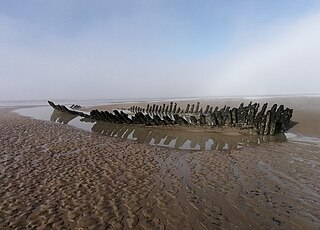
The Nornen was a large sailing vessel of the barque type. The three masts were typical of barque ships; the foremast and mainmast square-rigged and the mizzenmast (stern) rigged fore-and-aft. The main mast could be rigged with up to five horizontal yards.


















